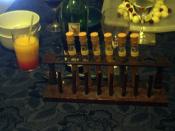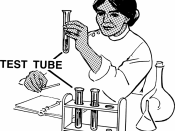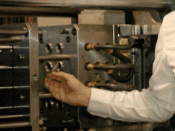Purpose
to verify that heat is released when a new bond is formed
to calculate the amount of heat (cal/g) released when CuSO4 is hydrated by applying the specific heat formula (mass (g) x ÃÂtðC x Cp)
CuSO4(s) + 5H2O(l) CuSO4*5ììH2O(s)
Materials
Styrofoam calorimeter and cover
test tube
distilled water
anhydrous CuSO4
dropper pipette
electronic balance (.01g)
scoopula
temperature probe (computer)
graduated cylinder
buret
ruler
beaker
stirring rod
goggles
apron
Procedure
1. Use the buret to measure out 20 mL of H2O into the stryoforam calorimieter
2. Find the mass (g) and the length (mm) of your test tube and record the measurements in the data table.
3. Use scoopula to measure 1 g of anhydrous CuSO4 into the test tube. Record measurement in the data table.
4. Measure the height (mm) of CuSO4 within the test tube, record measurement in the data table.
5. Place the test tube and temperature probe through the holes in the calorimeter cover.
Make sure the test tube is touching the bottom of the cup. See Figure 1.
6. Start taking the temperature of the water in the calorimeter using the temperature probe and computer.
7. With a dropper pipette add enough distilled water into the test tube so that the anhydrous salt is covered. Record the number of drops you use.
8. Determine the amount of drops used to cover the cupric sulfate in mL by filling a 10 mL graduated cylinder with the same amount of drops
9. Determine the increase in temperature using the temperature probe and computer and once the temperature has stabilized record the data in the data table.
Data Table
length of test tube 12.5 cm
height of CuSO4ì in test tube 1.5 cm
mass of test tube 12.11 g
volume of H2O added 4...


